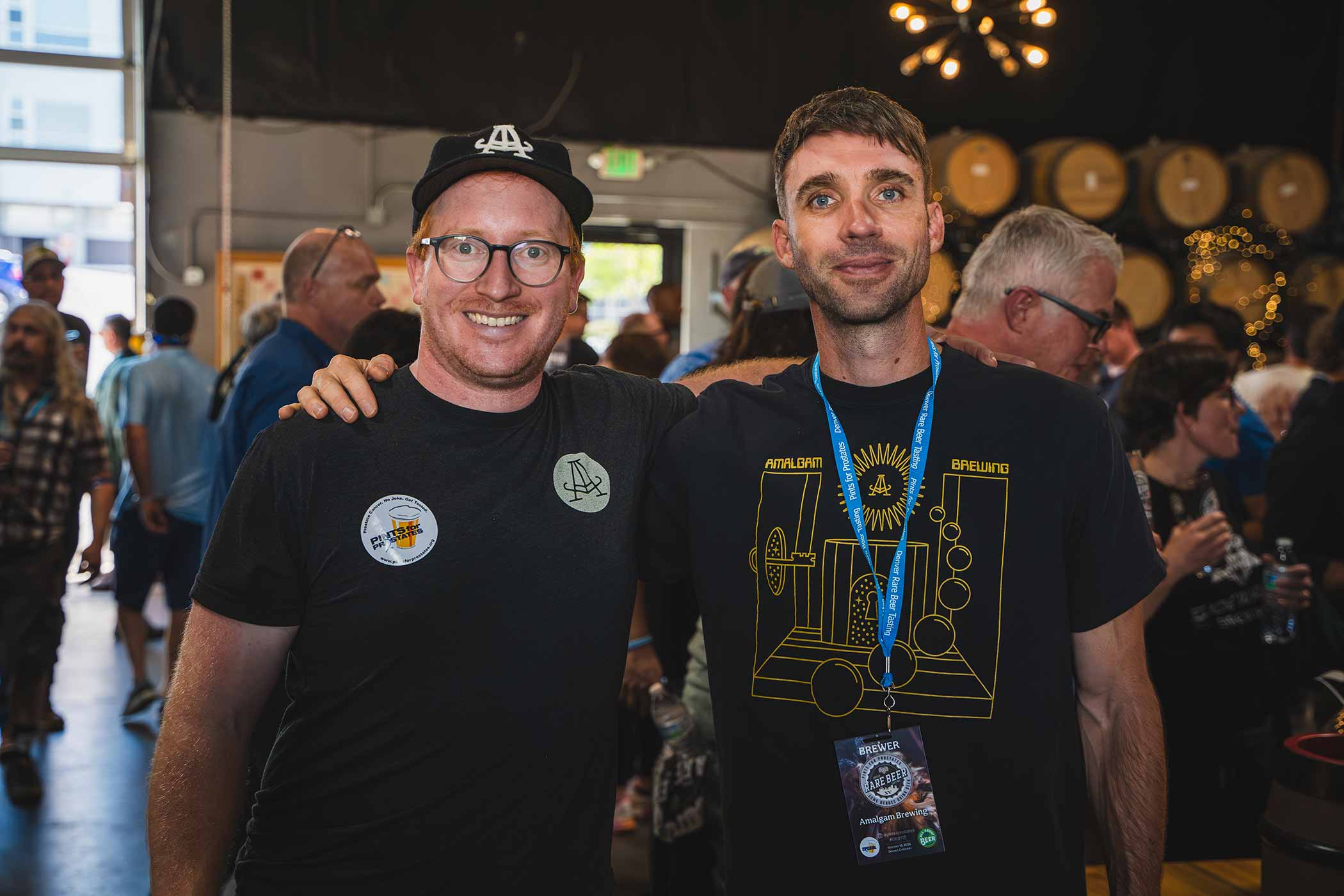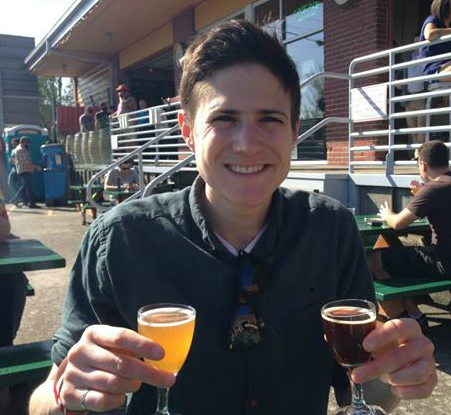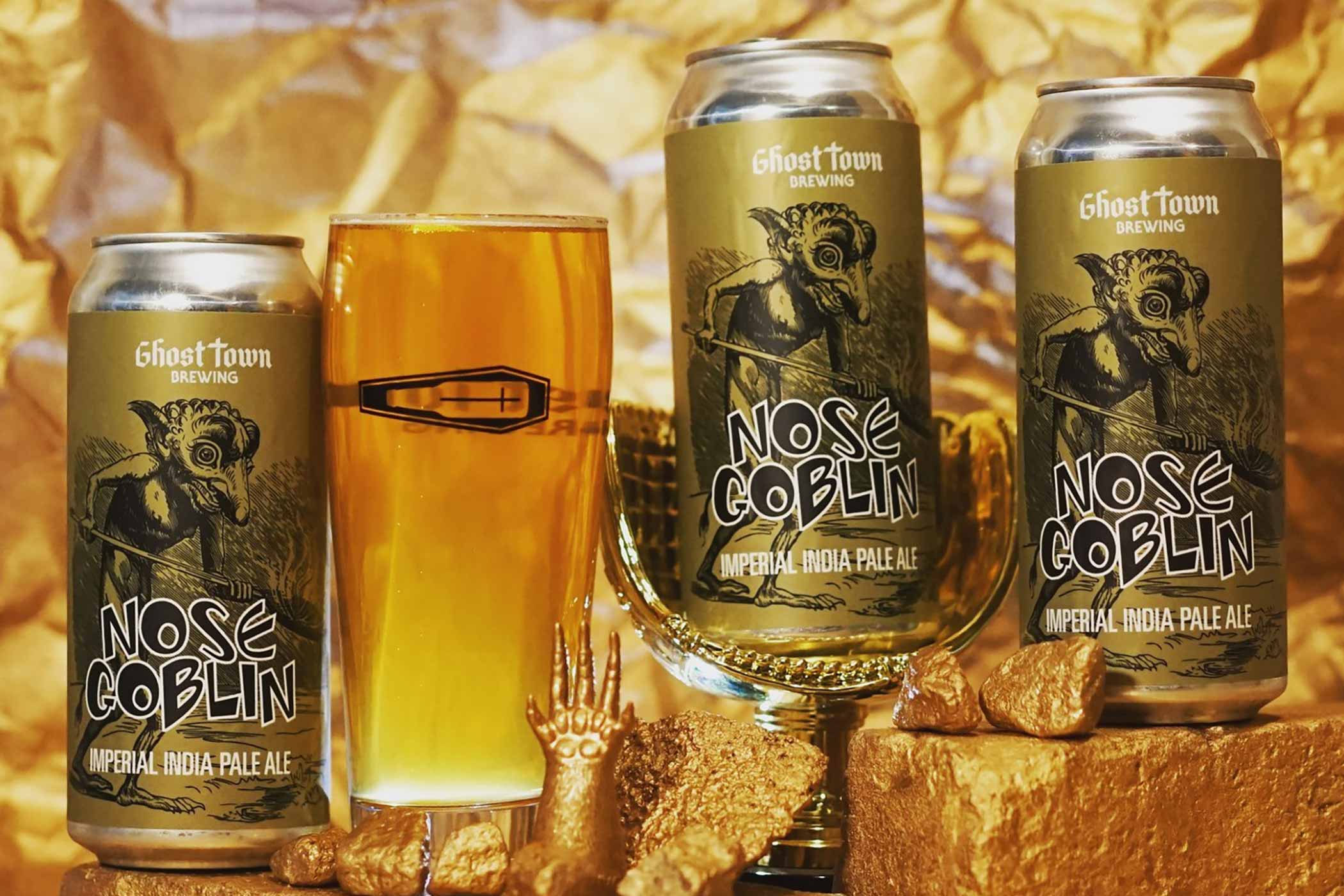Shop
Amalgam Brewing: The Tiny Tank Engine That Could
The sum of all its parts.
February's Top Stories:
Tucked away in the corner of one of the most respected lager breweries in the entire country is a tiny tank brewing some of the most exciting hoppy ales (and lagers, too). This 20-bbl ABS Commerical vessel from Pikes Peak Brewery stands tall and silent, almost like the unmoving King’s Guard at Buckingham Palace. In Bierstadt Lagerhaus’ close to 20,000 sqft taproom, you’d probably miss this small steel vessel if you weren’t looking for it. And why would you? It only takes up about 25 sqft of space. But for the last year, in that unassuming piece of metal, Amalgam Co-Founders Eric Schmidt and Phil Joyce are blowing minds with their exquisite beers.
It’s a massive departure from the core of Amalgam, a pet project that Schmidt and Joyce started in 2017, focusing pretty much on just straight-up mixed-culture beers.
Although not a departure from exquisite, because those incredible, elegant, nuanced mixed-culture beers rocketed Amalgam to Untappd’s second-highest-rated brewery in Colorado.
But recently, the Schmidt, who also works as Westbound & Down’s Creative Director, and Joyce, who brews full-time at Bierstadt, have flexed their IPA and bottom-fermenting biceps.
“I missed making hoppy beers,” Joyce told me simply as we shared a can of the brewery’s newest IPA—Coastal Bias—on a long red wooden bench inside Bierstadt’s taproom.
Today, the brewery drops here-now-gone-after-it-sells-out hoppy ales and lagers every four to six weeks.
Instead of brewing and blending mixed-ferm beers that could take years to mature, “it has been the perfect merger of something ephemeral with something intentional,” says Schmidt. “It gives us a chance to breathe, to connect with the ingredients, the people, and the relationships.”
Much like the brewery’s name, the new approach is an amalgamation.
“That feels really good to me,” says Schmidt, who started Amalgam with Joyce as a place to bring things together.
“It’s a mixture,” says Schmidt, who notes the definition goes deeper than just blending barrels of beer together, “but as blending resources, blending people, blending communities.”
In seven years, the duo has gone from mixing in many, many barrels to making mesmerizing beers…all from one tiny tank.
From 93 Square Feet in Powder Keg to 25 Square Feet in Bierstadt Lagerhaus
Schmidt and Joyce have always found a way to carve out their own corners in the industry.
They’ve taken an inch and turned it into a mile, literally.
The two partners started Amalgam in ninety-three square feet of a small four-barrel brewpub called Powder Keg in Niwot, CO. Joyce worked as the head brewer while Schmidt ran the bar.
Schmidt fell in love with Joyce’s homebrew sours and double IPAs.
“Phil was the best homebrewer,” Schmidt says. “He was just blowing me away. I couldn’t believe that his beers were homebrewed.”
An engineer by trade, Joyce got into homebrewing as a casual hobby with some friends after college to see if they could recreate their favorite seasonal beers.
Confident they could capture a dedicated audience with their powerful sour beers, Schmidt and Joyce started Amalgam with two wine barrels, one freshly dumped Chardonnay barrel, and a mothership barrel Joyce used while homebrewing.
Their first beer, a golden sour called Ascension, perhaps fittingly, announced Amalgam to Colorado like a chorus of angels’ trumpets.
Let’s just say people immediately noticed.
Amalgam’s Ascension
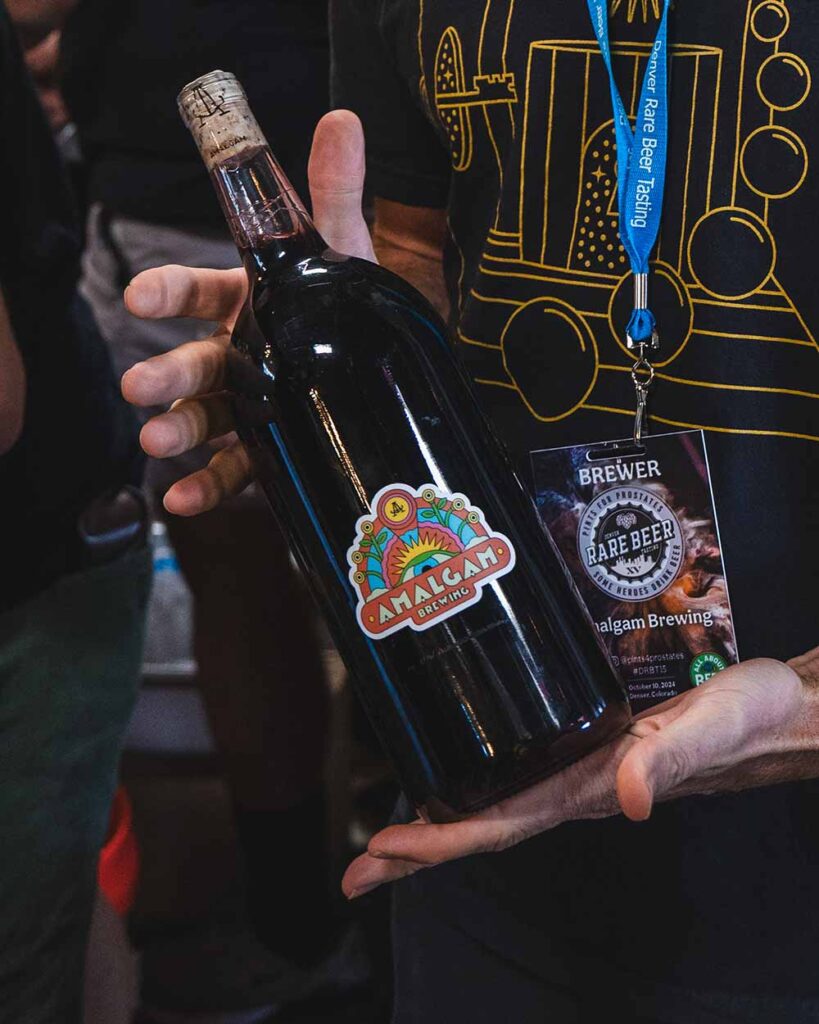
Photography courtesy of Magic Muncie | Hop Culture
The story of Amalgam’s first beer is a little unbelievable. But not for its aggressive hopping rates or sexy Southern Hemisphere hops.
“I struggle to use any other word than primitive,” shares Joyce.
A golden sour ale blended from Amalgam’s first two barrels and aged in neutral oak and freshly emptied Chardonnay barrels, Ascension gets its name from a series of almost angelic incidents.
When Schmidt and Joyce went to pick up the 375mL bottles they’d chosen for Ascension, the forklift mysteriously died while holding the pallet at its highest point. “They were just stuck up there in the air,” laughs Schmidt.
With limited space at the Powder Keg, Schmidt and Joyce had to condition the bottles up in the brewpub’s attic. “Every case had to be carried up on a ladder on my shoulders,” remembers Schmidt, assuring that the attic space was actually very cool.
The beer itself propelled Amalgam to new heights.
Joe Tumbarello, the founder of a local liquor store called Small Batch Liquors, bought fifty cases. “Enough to more or less put a down payment on our first warehouse space,” laughs Schmidt.
When the Powder Keg closed in 2018, Schmidt and Joyce kept Amalgam alive in that 5,000 sq-ft space, growing Amalgam to sixteen oak barrels and a couple of puncheons.
At the same time, they both worked other jobs. Joyce helped develop the mixed-culture and barrel program at Westbound & Down, while Schmidt did some consulting before joining Westbound & Down in his current role.
After spending time as the Director of Brewing Operations at Ratio, Joyce joined Bierstadt.
It’s here, in a tiny corner of the holy house of lager brewing, where he feels Amalgam has truly found its home.
Finding the Holy Grail in a Corner
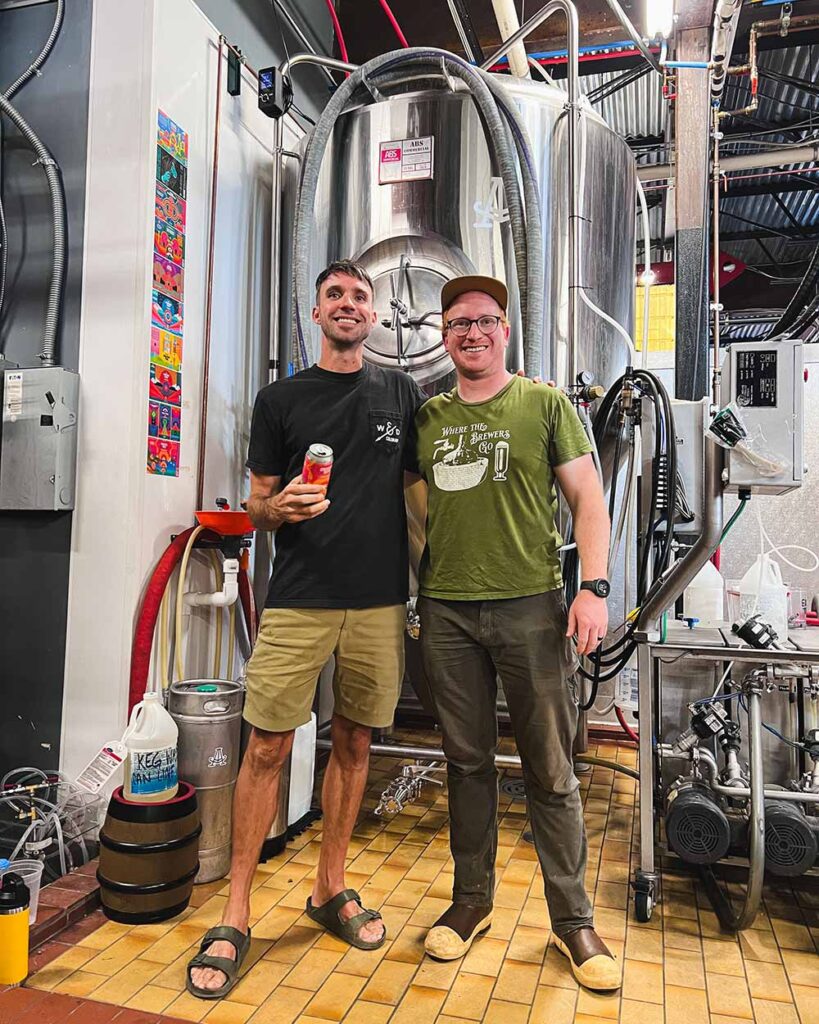
Photography courtesy of Magic Muncie | Hop Culture
When Ratio let Joyce go, he walked four blocks to Bierstadt’s taproom. “I wanted to drink a Helles,” he remembers. Before he left, Bierstadt Co-Founder Ashleigh Carter asked if he wanted to help out since it was right before the Great American Beer Festival, the brewery’s busiest week of the year.
Joyce just stuck around. He laughs, “I never even had an interview!”
After a year brewing at Bierstadt, Joyce says Carter wanted to take a walk with him on the brewhouse floor. She asked him, “What are you interested in? What are your curiosities?” says Joyce, who responded, “I miss making hoppy beer.”
As they talked, Carter pointed to a space. “If you can fit a tank here, you can make whatever beer you want,” Joyce recounted. Not even two weeks later, Joyce found that 20-bbl ABS Commerical tank from Pikes Peak Brewery on sale at an auction. “We picked it up ourselves with a friend’s car hauler trailer,” says Joyce, who just told Carter, “It’s coming.”
Inspired by his time at Bierstadt, Joyce says Carter constantly challenges him.
When Joyce pulled out characteristics he liked in Bierstadt’s lagers from their decoction process and wanted to find a way to recreate that in Amalgam’s hoppier ales, Carter simply asked, “Why wouldn’t you decoct an IPA?”
So he did just that with a New Zealand-style IPA called Coastal Bias. Adding a base of half Weyermann floor-malted Bohemian and half Gambrinus pilsner malt, Joyce feels the decoction made a big difference. “It’s still very lean, but there’s some mid-palate heft that I think I experience in pils and helles,” says Joyce. “And I drink those beers every single day.”
He now calls that beer the one he’s most proud of at Amalgam.
“I really just feel like I’m learning to make beer all over again,” he says.
When Joyce and Schmidt speak about Carter and Bierstadt, it’s with the utmost reverence.
“I refer to her as your favorite brewer’s favorite brewer,” laughs Schmidt. “She does something at such a high level but also without ego or pretension.”
Joyce loves how Carter has stuck to her guns at Bierstadt, brewing the best German lagers she possibly can. At the end of the day, “We want to make beer as good as Ashleigh,” says Joyce. “This is the holy grail we’re all trying to achieve.”
Amalgam has always focused on one beer at a time. And while it used to be blended mixed-ferm beers, now, in a new corner to call home, they’re brewing something entirely different.
One Little Tank, Fourteen Big Beers
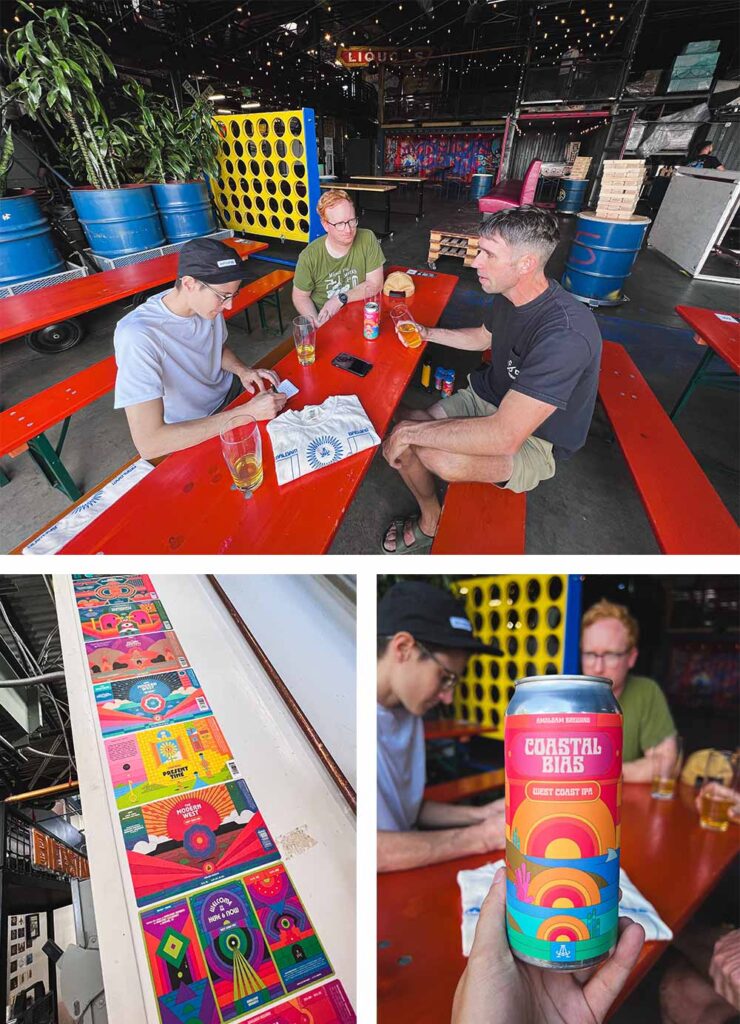
Photography courtesy of Magic Muncie | Hop Culture
When Amalgam launched in 2017, mixed-culture and sour beers made sense. They weren’t available everywhere, and the time and care that went into crafting them produced exclusive bottles that people often sought.
“Those beers inspired us,” says Joyce, who loves and respects Belgian lambic and saison producers.
But now, you’re as likely to find a 3 Fonteinen Cuvée Armand & Gaston on the shelf in the Denver as cans of Bierstadt Lagerhaus Slow Pour Pils.
And the large-format bottles have quite frankly gone a bit out of style. “Some of those beers are great for sharing,” says Joyce, “but a lot of them are difficult to just enjoy, sit down, open a bottle, and have the whole thing.”
Joyce can’t put his finger on exactly when things changed. But now, he just enjoys having a beer.
Being at Bierstadt, which exclusively makes German lagers, may have helped. “I get to brew and drink world-class lager all the time,” he admits happily.
The picture changed.
So, instead of fearing the shift, Schmidt and Joyce embraced it.
Instead of being tied down to letting a mixed-ferm beer ferment and blend for years at a time, Amalgam now makes something new every four to six weeks.
“I probably have commitment issues,” laughs Schmidt, “but it’s hard to tie yourself down because it kills authenticity.”
Schmidt calls Amalgam’s new direction the “perfect merger of something ephemeral.”
Each new beer focuses on ingredients and producer relationships.
“It gives us a chance to actually take a second to breathe to connect with those people,” Schmidt explains.
When we visited Schmidt and Joyce last October, that new beer was Coastal Bias, which won the Jesse’s Pick category in the 2024 Alpha King Challenge, a competition crowning beers above sixty IBUs.
“This beer is all focused on the hops,” says Joyce. Not just the hops but the people who picked them. For instance, this West Coast IPA includes the new hop Krush, picked in tandem with Cannonball Creek Co-Founder Brian Hutchinson, who Joyce says has an excellent nose for hops.
And the Mosaic? For that lot, Amalgam tapped Highland Park R&D Brewer Tyler, a groomsman at Joyce’s wedding. “Their Timbo Pils is the nicest expression of Mosaic you can ever find,” says Joyce. “They do a very good job selecting this complex yet tropical Mosaic character.”
For the Simcoe, Joyce and Schmidt tapped Westbound & Down. “We think it’s the coolest hop they selected,” says Joyce.
Lastly, the Nelson Sauvin comes from fifth-generation New Zealand hop farm Mac Hops Ltd. Joyce says he trusted Mac Hops owner Brent McGlashen to choose their lot blindly. “I wanted some Nelson hops without the plasticky, sometimes diesel character and just straight passion fruit, peachy, and big tropical,” says Joyce. And McGlashen delivered.
The result is a beer we’d call the new frontier of West Coast IPAs—less about brash headiness and more about balanced fruitiness. At 7.2%, the beer flirts with a higher ABV, but you’d never know it.
“It’s like the best bag of hops you’ve ever opened,” says Schmidt with a smile.
My first beer that night, I probably drank way more than I wanted to or should have, but I just couldn’t help myself.
Amalgam calls Coastal Bias’ big pineapple, lychee, and passionfruit notes “dangerously drinkable.”
I’d second that and go a little further. Amalgam is dangerously intoxicating right now—I want everything they’re making.
Past, Present, and Future
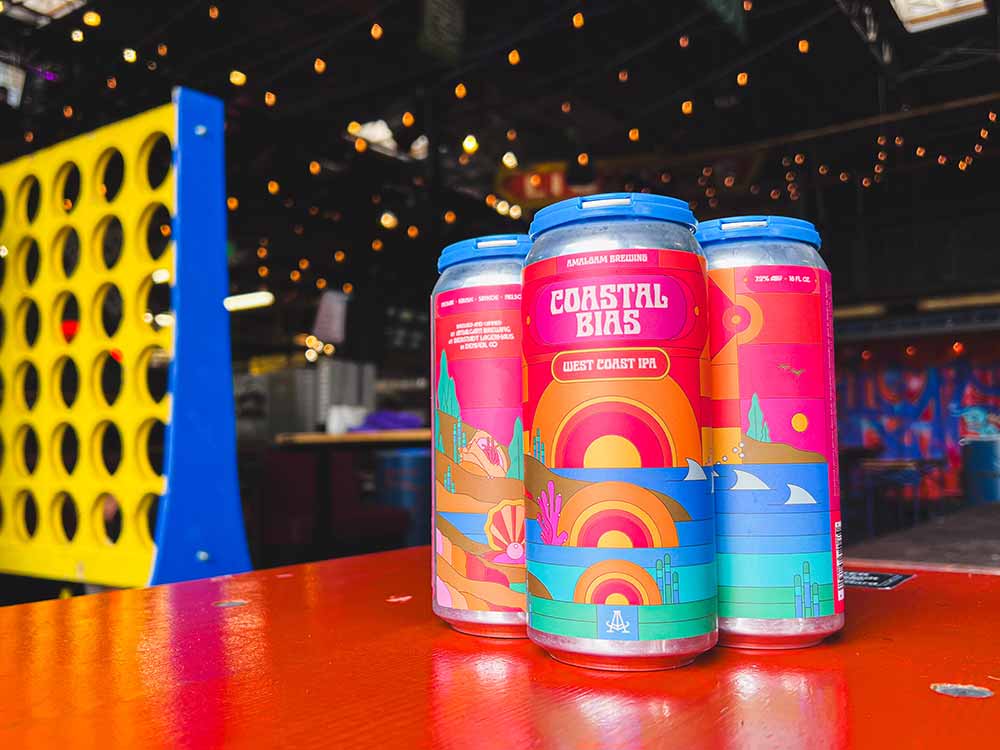
Photography courtesy of Magic Muncie | Hop Culture
If Coastal Bias represents Amalgam’s future, Welcome to the Here & Now perhaps best showcases its present.
“This beer is what we’re doing now,” states Schmidt. “Don’t live in the past. Don’t look for something else; just be here to drink this right now.”
Of the almost fourteen beers from the tank, eight have been hoppy ales, and the rest lagers.
We actually named this hoppy pilsner one of “The Best Beers We Drank in 2023.”
Amalgam approached the challenge of brewing a West Coast pils with aplomb. After all, the Colorado-based brewery has played with the curve for the last seven-plus years, bending the rules with great finesse.
Deftly hopped with Mosaic and Strata, Welcome to the Here & Now pours a super clear, pale grass color. Giant, clingy bubbles on the foam create a beautiful hop bouquet on the nose.
On the sip, it’s everything you want in a pilsner—tight, crisp, floral—but amped up with a very symmetrical hoppiness that pleasantly fades before you drink again.
When I tasted this beer in 2023, I wrote a little reminder in my notes: “It’s f**king delicious!”
Others like Modern West recently won a gold from the 2025 Colorado Brewers Cup in the “Standard American-Style IPAs/West Coast-Style India Pale Ale, and while that beer came and went, as did Coastal Bias, the pedigree Schmidt and Joyce are building almost makes me want to wait in a line again for a release (almost).
Amalgam feels like a direct reflection of Schmidt and Joyce’s enthusiasm. You can’t help but sit down with them at a picnic table, drink a few too many of their West Coast pilsners or New Zealand IPAs, and leave with a buzz—and not from the alcohol.
“I am the most creative I’ve ever been,” gushes Joyce.
The only question now is whether that tiny tank has enough room for all of Amalgam’s imagination.
We think so.

